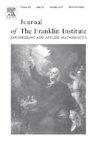采用动态事件触发机制的自适应连通性保护编队控制
IF 3.7
3区 计算机科学
Q2 AUTOMATION & CONTROL SYSTEMS
Journal of The Franklin Institute-engineering and Applied Mathematics
Pub Date : 2024-11-04
DOI:10.1016/j.jfranklin.2024.107331
引用次数: 0
摘要
现实生活中多代理系统的连接性保护是设计有效可靠的控制算法以实现预期目标的关键。但系统非线性和不确定性的共存给算法设计带来了困难,特别是在事件触发的环境中,由于需要整合多种成分,这种困难变得更加严峻。本文主要针对控制方向未知、内在非线性与参数不确定性耦合的情况,提出了一种结合了动态事件触发机制的自适应连通性保护编队控制策略。首先,给出一组作为控制障碍函数的势函数,以保持通信图的规定连通性。其次,为代理引入了两类动态增益(一类基于努斯鲍姆函数),以应对系统非线性、不确定性和执行错误的不利影响。因此,我们构建了一个自适应事件触发的编队协议,在保证每个代理的最小执行间隔为正值以避免芝诺行为的同时,实现了理想的编队并保持了连通性。特别是,所开发的事件触发机制中的阈值是在线动态调整的,而不是静态的,这更好地提高了资源效率。本文给出了一个仿真实例,以证明所提策略的有效性和优势。本文章由计算机程序翻译,如有差异,请以英文原文为准。
Adaptive connectivity-preserving formation control with a dynamic event-triggering mechanism
Connectivity preservation for real-life multi-agent systems is key to designing an effective and reliable control algorithm to achieve desired objectives. But the coexistence of system nonlinearities and uncertainties makes it difficult for the algorithm design, and especially in the event-triggered setting, such difficulty becomes severer due to the demand for integration of multiple ingredients. This paper focuses on proposing an adaptive connectivity-preserving formation control strategy that incorporates a dynamic event-triggering mechanism, in the scenario of the unknown control directions and intrinsic nonlinearities coupling with parameter uncertainties. First, a cluster of potential functions serving as control barrier functions are given to maintain the prescribed connectivity of communication graph. Second, two types of dynamic gains (one type is based on a Nussbaum function) are introduced for agents to cope with the system nonlinearities, uncertainties and the adverse effect of the execution error. As such, an adaptive event-triggered formation protocol is constructed such that the desired formation with connectivity preservation is achieved while a positive minimum inter-execution interval is ensured for each agent to avoid Zeno behavior. Particularly, the threshold in the developed event-triggering mechanism is dynamically adjusted online, rather than static, which better improves resource efficiency. A simulation example is given to demonstrate the effectiveness and advantage of the proposed strategy.
求助全文
通过发布文献求助,成功后即可免费获取论文全文。
去求助
来源期刊
CiteScore
7.30
自引率
14.60%
发文量
586
审稿时长
6.9 months
期刊介绍:
The Journal of The Franklin Institute has an established reputation for publishing high-quality papers in the field of engineering and applied mathematics. Its current focus is on control systems, complex networks and dynamic systems, signal processing and communications and their applications. All submitted papers are peer-reviewed. The Journal will publish original research papers and research review papers of substance. Papers and special focus issues are judged upon possible lasting value, which has been and continues to be the strength of the Journal of The Franklin Institute.

 求助内容:
求助内容: 应助结果提醒方式:
应助结果提醒方式:


